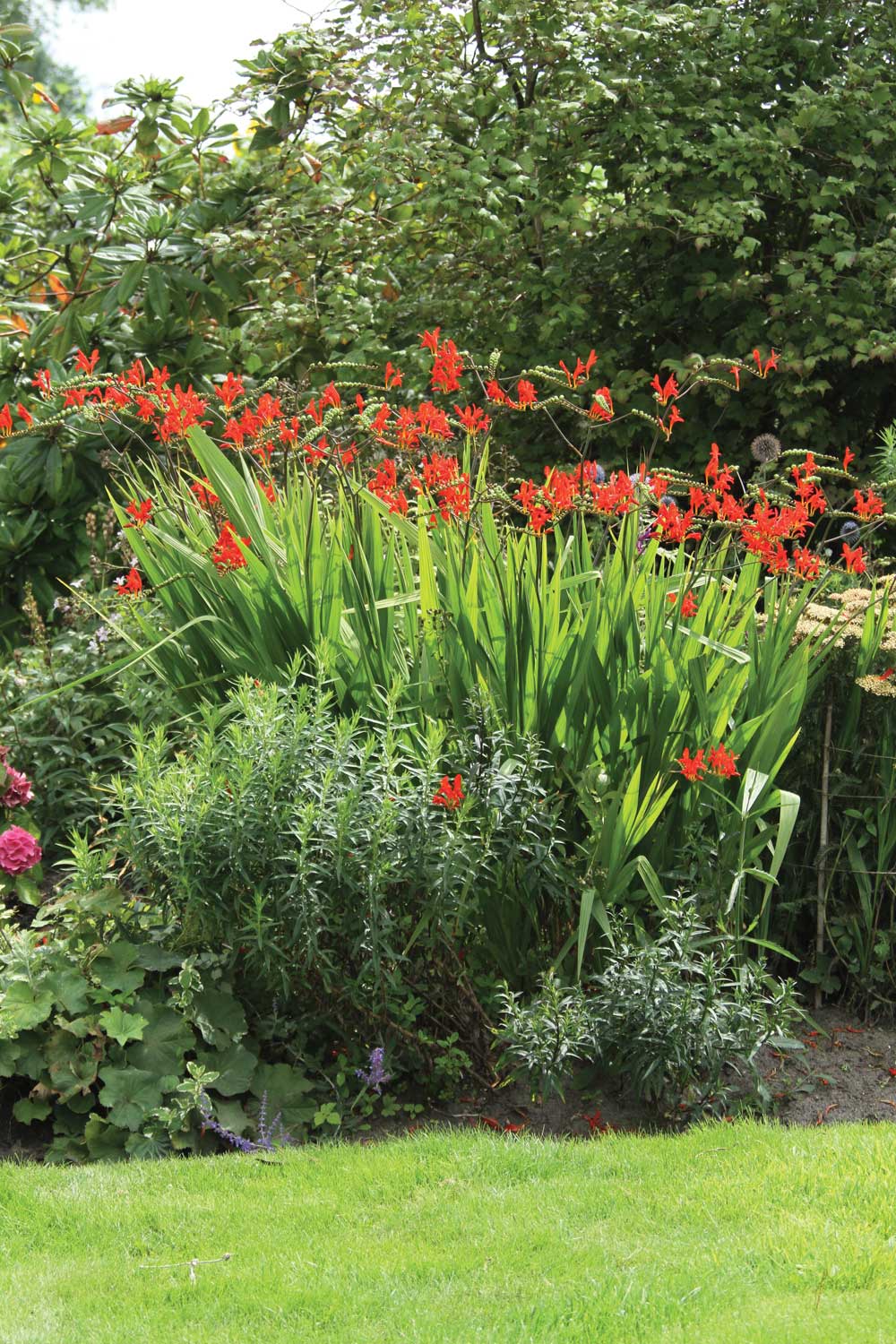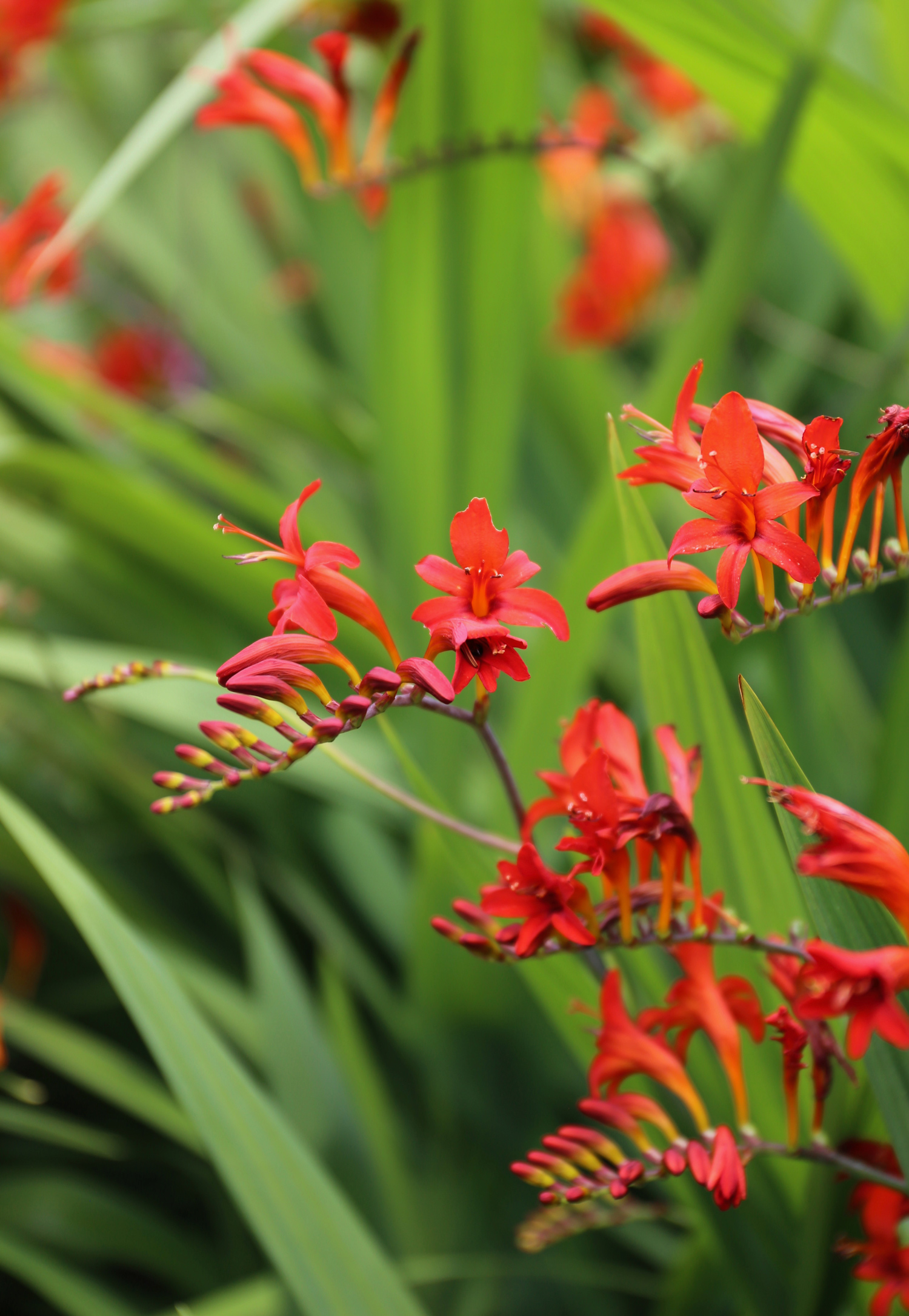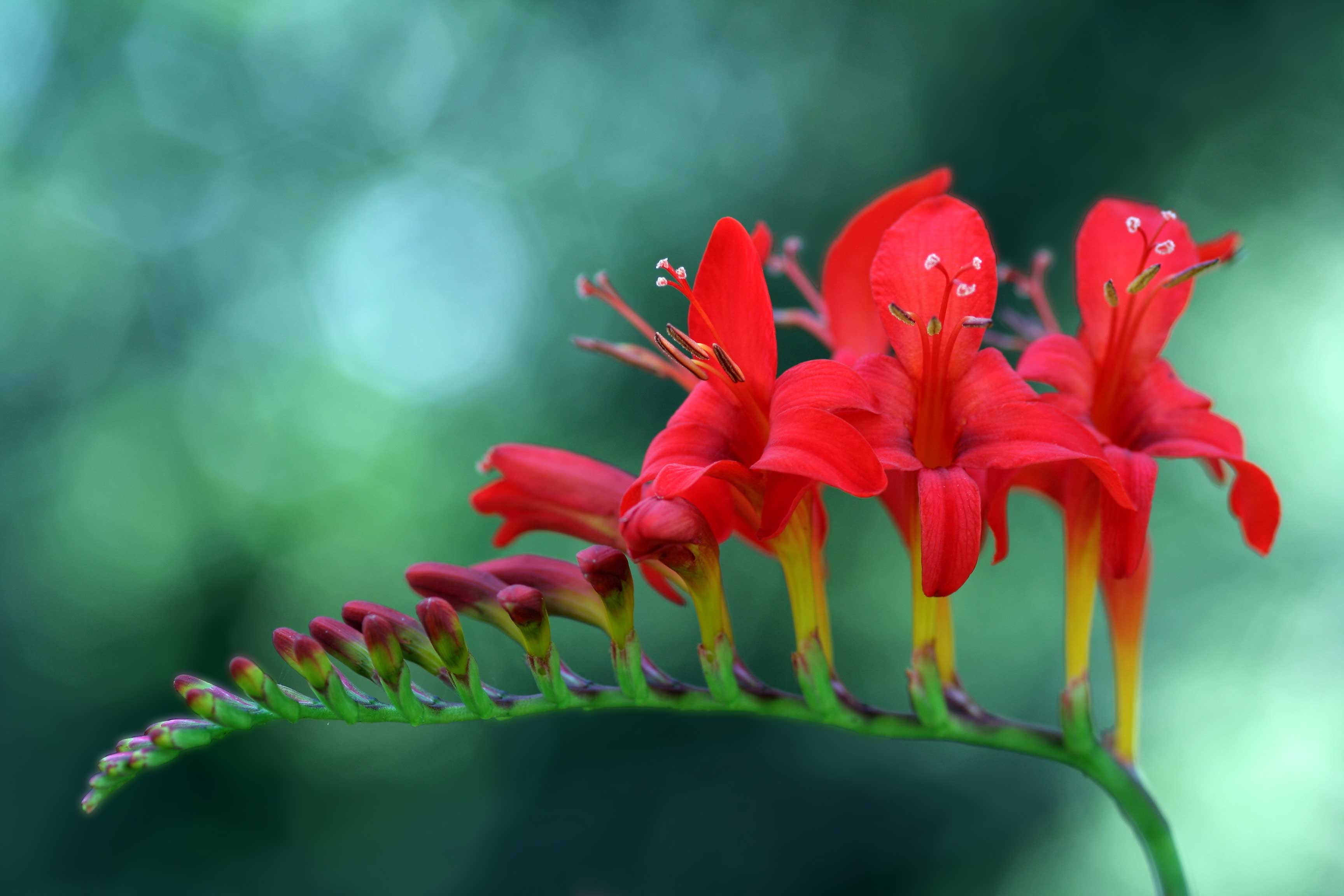Attract Hummingbirds With One of Their Favorite Flowers
Hummingbirds have a weakness for red flowers, and in particular the blood-red flowers of Crocosmia ‘Lucifer.’ When these plants are in bloom, hummingbirds can think of nothing else. From dawn to dusk, they are darting among the blossoms, checking, and rechecking to make sure they don’t miss a drop of nectar. When not cruising the flowers, they are patrolling the yard to ensure no other hummingbirds try to share their prize.
Many gardeners steer clear of vibrant colors like red. But if you enjoy watching hummingbirds, you'll want to make room in your garden for some crocosmia 'Lucifer.'

What to Know about Crocosmia
Crocosmias are native to South Africa, and are generally found in moist grasslands. There are many varieties available, with different heights, flower shapes and flower colors. All have sword-like foliage with vertical pleats, and tubular flowers on wiry, arching stems.
The plants grow from round, firm corms that are very similar to the corms of crocus and gladiolus. All crocosmias are winter hardy in zone 7, most are hardy in zone 6. The cultivar ‘Lucifer’ is reliably hardy to zone 5 and will often survive in zone 4. It has brilliant, red-orange flowers that you might call “red squared”. Other popular cultivars include ‘Emberglow’, ‘Emily McKenzie’, ‘George Davison’ and ‘Solfatare’.

Where to Plant Crocosmia
Crocosmia’s brightly-colored flowers add midsummer excitement to mixed perennial borders.
Even when the plants are not blooming, their upright foliage is an attractive vertical element. They are excellent companions for ornamental grasses and make great cut flowers. Planted in containers, they provide a welcome burst of late summer color.

How to Plant Crocosmia
Plant the corms in well-drained soil. Though crocosmia grow best with consistent moisture, they dislike heavy soil and won’t tolerate being wet. In colder regions, the plants should be given a spot that’s warm and south facing.
In moderate climates, plant the corms 4-5” deep. In colder zones, planting a little deeper will provide additional insulation.

Caring for Crocosmia
Over time, most crocosmia cultivars, including ‘Lucifer’, grow into attractive clumps. In cold climates, it may take two years for the plants to get well established. In the deep south and Northwest there are a few species that are considered invasive, so if you’re in those areas, stick with the named cultivars.
The plants are rarely troubled by diseases or insects, and they are usually ignored by deer and rodents.
After the blossoms are spent, cut off the flower stalks. Let the leaves continue growing. The foliage can be left in place over the winter or can be cut back to a height of 4 to 5”.

Dividing Crocosmia
Under ideal growing conditions, crocosmia corms will multiply and grow into large clumps. If the corms get too crowded, the plants produce fewer flowers. As the corms multiply, they also push their way up toward the soil surface and this can make the plants floppy. Dividing the clumps every 3 to 4 years will restore their vigor and improve flower production.
The best time to divide crocosmias is fall. Start by cutting back the leaves to 5”, then pry the clump apart, taking care not to break off the young shoots. Replant smaller clumps, making sure the corms are 5 to 6” deep.
Get the basics about growing crocosmia HERE. Shop for crocosmia 'Lucifer HERE.
If you are interested in growing other types of plants with bright red flowers that will attract hummingbirds, consider: Dahlias Bishop of Landsdaff and HS Flame, red salvias, red nasturtiums, red geraniums, red hibiscus, lobelia cardinalis and red zinnias.
